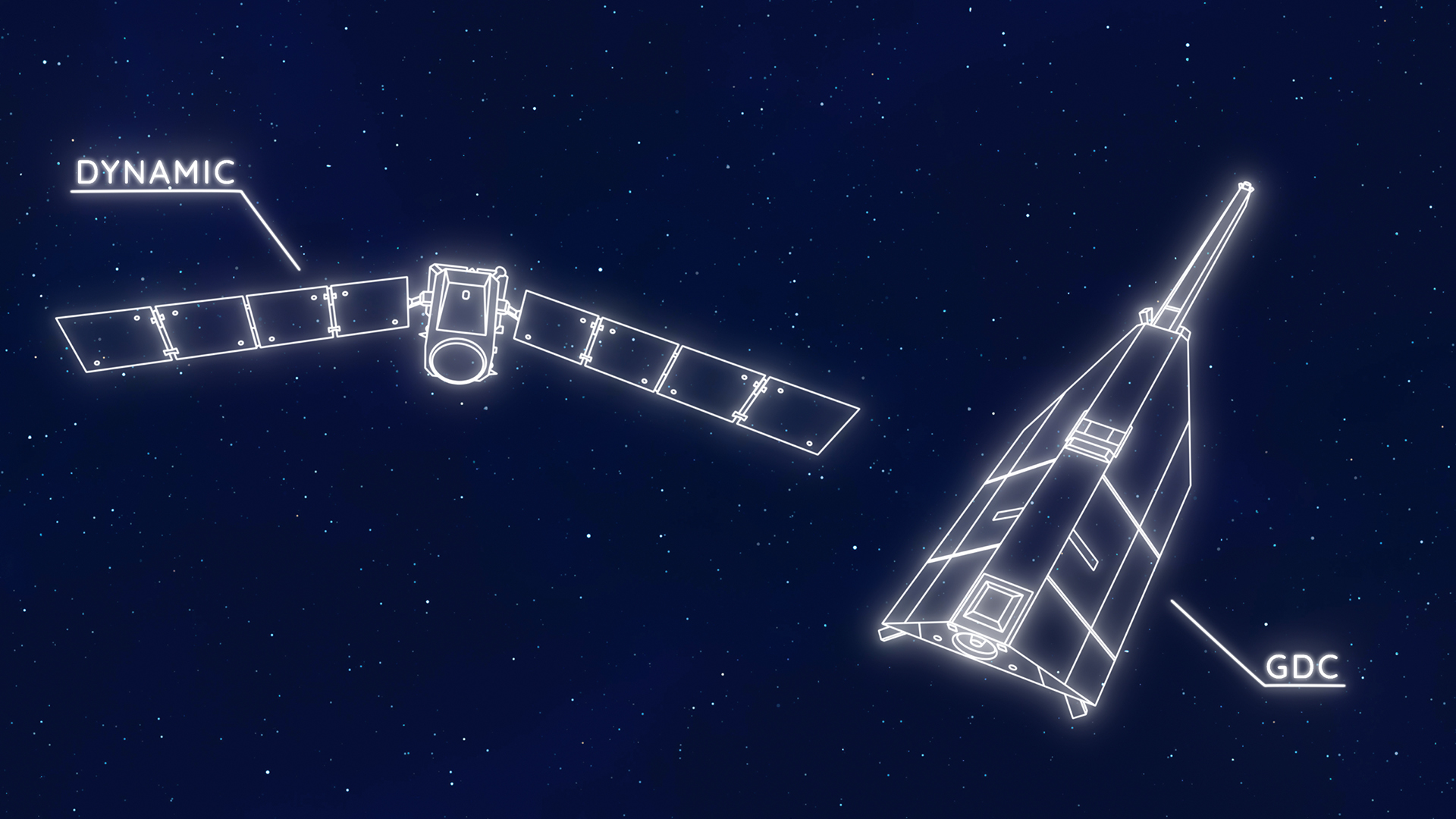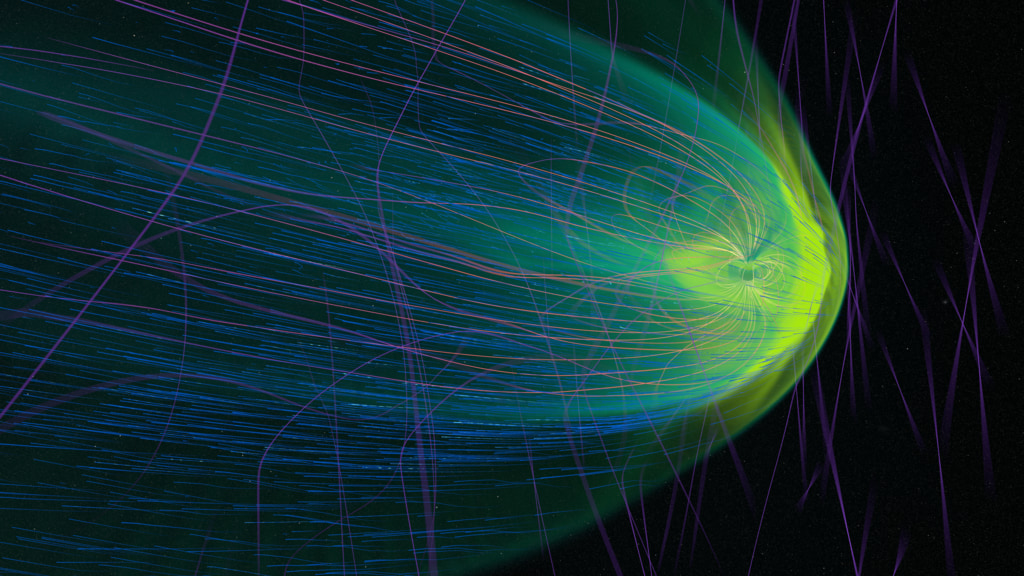Geomagnetic and Atmospheric Response to May 2024 Solar Storm
This visualization shows the Earth's magnetosphere being hit by a geomagnetic storm. The MAGE model simulates real events that happened throughout May 10-11, 2024.
White orbit trails: All satellites orbiting Earth during the storm
Orange orbits: Proposed orbits for six GDC spacecraft
Orange-to-purple lines: Magnetic field lines around Earth
Blue trails: Solar wind velocity tracers
Green clouds: Electric field current intensity
Credit:
NASA Scientific Visualization Studio and NASA DRIVE Science Center for Geospace Storms
From May 7-11, 2024, multiple strong solar flares and at least seven coronal mass ejections (CMEs) stormed toward Earth. Traveling at speeds up to 3 million mph, the CMEs bunched up in waves that reached Earth starting May 10, creating a long-lasting geomagnetic storm that reached a rating of G5 — the highest level on the geomagnetic storm scale, and one that hasn’t been seen since 2003.
The Johns Hopkins University Applied Physics Laboratory-led DRIVE Science Center for Geospace Storms (CGS) is building a Multiscale Atmosphere-Geospace Environment (MAGE) supercomputer model to understand and predict space weather. This visualization depicts simulation output from the GAMERA magnetosphere model component of MAGE to show how on May 10 and 11, these CMEs interacted with Earth’s magnetosphere and upper atmosphere — some of the largest effects of space weather.
NASA’s future Geospace Dynamics Constellation (GDC) mission will study how these regions react to fluctuations in energy input and how they distribute that energy globally. GDC will enhance our understanding of space weather, thus allowing for better modeling and forecasting. They are shown in orange in the visualization to demonstrate the kind of space weather they may be able to observe and measure.
This data visualization is the same as above, but without the hypothetical GDC satellite orbit paths.
For More Information
Credits
Please give credit for this item to:
NASA's Scientific Visualization Studio and NASA DRIVE Science Center for Geospace Storms
-
Visualizer
- Andrew J Christensen (SSAI)
-
Technical support
- Laurence Schuler (ADNET Systems, Inc.)
- Ian Jones (ADNET Systems, Inc.)
-
Scientists
- Slava Merkin (Johns Hopkins University/APL)
- Douglas E. Rowland (NASA/GSFC)
- Katherine Garcia-Sage (Catholic University of America)
-
Writer
- Rachel Lense (ADNET Systems, Inc.)
-
Project support
- Lacey Young (eMITS)
- Rachel Lense (ADNET Systems, Inc.)
Release date
This page was originally published on Thursday, December 12, 2024.
This page was last updated on Monday, April 7, 2025 at 2:35 PM EDT.
Missions
This page is related to the following missions:Datasets used
-
MAGE (Multiscale Atmosphere-Geospace Environment)
ID: 1200MAGE will span the domains of geospace, from the lower atmosphere to the thermosphere-ionosphere, to the different regions of the magnetosphere. It will resolve global dynamics and critical mesoscale processes throughout geospace with highly precise numerical techniques. MAGE will be made available for community use via a permissive open-source license.
This dataset can be found at: https://cgs.jhuapl.edu/Models/mage.php
See all pages that use this dataset -
GAMERA (Grid Agnostic MHD for Extended Research Applications)
ID: 1201GAMERA is a new magnetohydrodynamic (MHD) simulation tool building and improving upon the high-heritage Lyon-Fedder-Mobarry (LFM) code. GAMERA has been written completely from scratch in modern Fortran and provides a flexible, portable, and exascale-capable MHD code. GAMERA features multiple improvements over LFM including: minimal external library dependence, high degree of optimization, OpenMP parallelism allowing use of heterogeneous architectures, and multiple numerics upgrades. Thus, while preserving all key numerical algorithms underlying the LFM code, GAMERA provides a robust and user-friendly solution for sustainable future.
Credit: References
This dataset can be found at: https://cgs.jhuapl.edu/Models/gamera.php
See all pages that use this dataset
Note: While we identify the data sets used on this page, we do not store any further details, nor the data sets themselves on our site.

